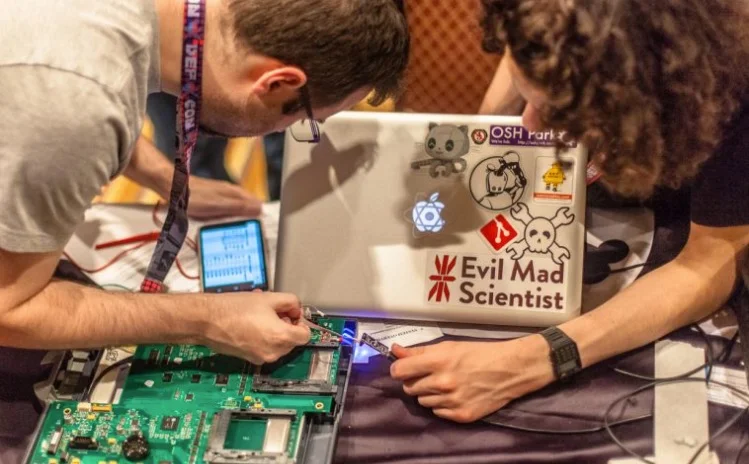Management of today’s worker is fueled by data and wearable tech
By Laura Haight
Manufacturing is enjoying a resurgence nationally with job growth reaching a 25-year high. At the end of January, the US had 12.5 million manufacturing jobs employing 8.5 percent of the workforce.
Along with growth, manufacturing also leads in another, less desirable area: Risk. The Bureau of Labor Statistics reports there are nearly 400,000 non-fatal injuries each year in the manufacturing sector, and about 300 fatalities.
Busy manufacturing plants are dangerous places. Workers are surrounded by heavy machinery, moving belts, lifts and other equipment, and there are gases, chemicals and fire hazards to cope with every day.
A great deal of technology that is part of the Industrial Internet of Things (IIoT) along with some tools that may evoke movie superheroes has come to market in the past few years to help make workers safer and, by extension, more efficient.
A significant risk to workers is fatigue. Manual labor is hard, workers carry more and more things around with them. And there are few workers, who must shoulder a bigger burden than before. Enter the exoskeleton. We wrote about this first back in 2015 when Lockheed Martin developed a system that enhances a worker's’ physical capabilities, lightening their loads and enabling them to be more productive - as much, Lockheed predicted, as 27 times more. This has tremendous possibilities for civilian as well as military manufacturing, mining, exploration, and more. But another byproduct is the potential for minimizing physical limitations among aging workers.
The first real test was a non-powered skeletal support system of metal struts that took weight off the wearer to increase productivity by reducing fatigue. It was tested with Navy shipbuilders, then SEALs. Now a new powered version that incorporates artificial intelligence (AI) and machine learning to anticipate the wearer’s movements and give a boost, is being tested by the Army. That all lets workers or soldiers lift more, carry more, work over their heads more, climb more, with significantly less fatigue. See the exoskeletan at work. (/bit.ly/2NeBInt)
Less fatigue, generally, also means fewer accidents.
A lot of technology development for manufacturing is happening under the umbrella of “Connected Worker” programs.
These programs meld together a variety of tech including wearable tags, communications protocols, real time location services, and database development/design to create systems that address specific needs in the manufacturing, construction, mining and energy industries.
Sometimes these tech systems cross from safety to efficiency. That’s the case with worker location services. A major challenge on any worksite is keeping track of workers. Knowing who’s where and making sure they are where they are supposed to be, doing what they are supposed to be doing.
Several systems from both new and established technology companies utilize wearables – anything from a simple RFID (radio frequency identification) tag that can be embedded in clothing, such as a vest, to a handheld, smartphone-like device – to keep track of workers. Using communication protocols, the tag enables software tracking systems to identify workers on site, know where they are, and even alert them if they are moving into an area that’s restricted.
Knowing where a worker is is just the first step. How about knowing how he/she is feeling? Some wearables can track biometrics like temperature, breathing, and heart rate. Yes, I know NASA was able to do that in the ‘60s, but that was with full suits and arrays of electrodes. Today’s biometrics are lightweight vests embedded with sensors, such as a product made by United Safety. Two way audio communication lets the Connected Worker monitoring station inform the worker or supervisor of a health risk
In the Upstate, Modjoul is one of many developers around the US working in this space. Its product – the SmartBelt – is designed to keep workers safe in industrial and manufacturing environments while also potentially improving efficiency. The belt’s sensors identify behaviors like walking, sitting, falling, driving, lifting, etc., and turn those into working “verbs” that can be used to build a profile of a wearer’s movements. Transmitted to a proprietary software system, the data helps companies get visibility into how workers work.
Two other prevalent Connected Worker functions are fall detection and mustering. Falling is common in manufacturing and industrial sites. Today’s systems include the ability to detect a fall, how far, if the worker is motionless and, if so, for how long. Workers who often work on their own in remote parts of a facility need to be identified immediately. Some devices, like the Loner device developed by Blackline Safety, emit audible, visual and tactile alarms that requests the employee to confirm his or her well being by responding via a button press or by voice. A lack of a response will trigger another set of procedures to alert the supervisors and team members to respond.The fall detection available in many wearable systems is a significant safety improvement.
A number of different events could trigger the need to evacuate an area in a plant or industrial site. Often those events are localized and don’t require the evacuation of an entire facility. Many connected worker systems have built-in alert functions that can notify a specific group of workers of the need to evacuate and then track each worker to make sure they’ve left the area of risk.
On the back-end, all this data – where workers are, how long they stay there, how much they walk, sit, or stand, their temperature and breathing, and so much more can be tracked and databased to give visibility into everything from time on task, to supervision effectiveness and training needs.



